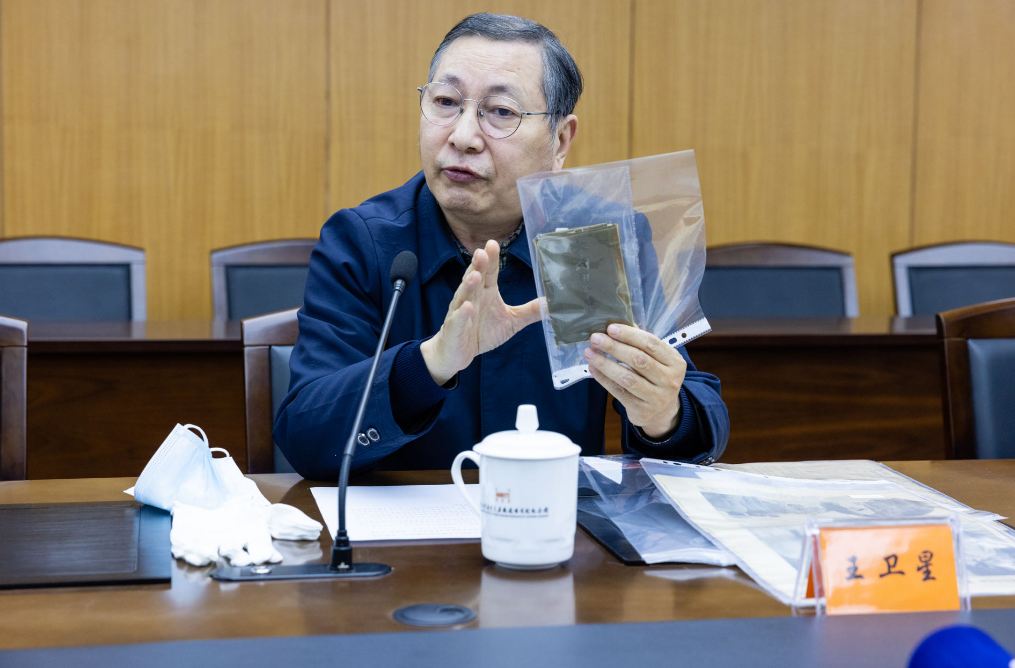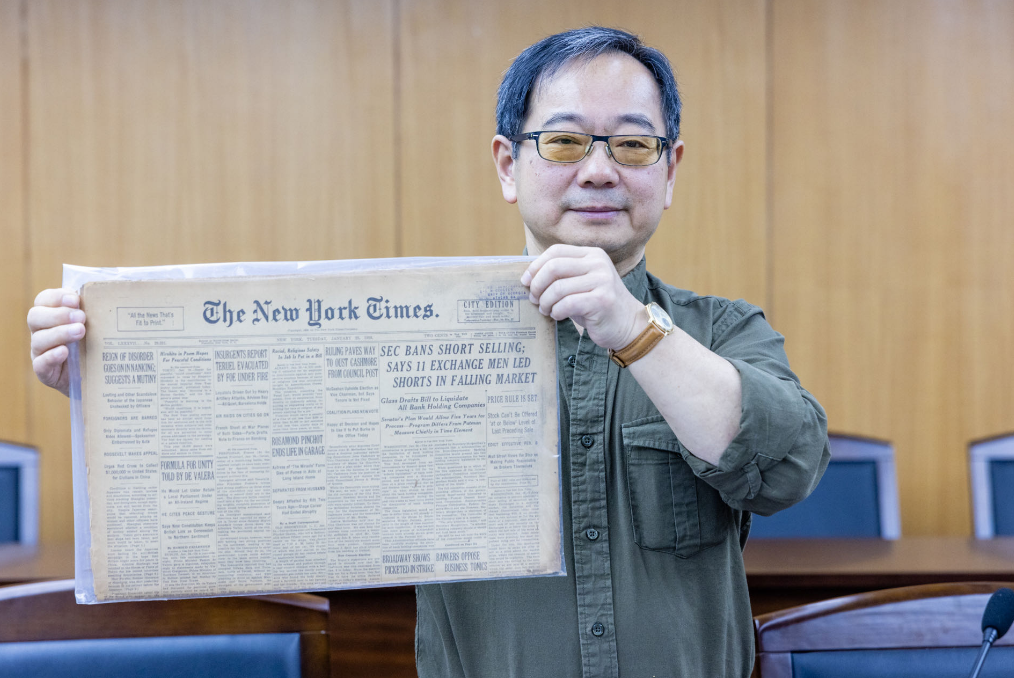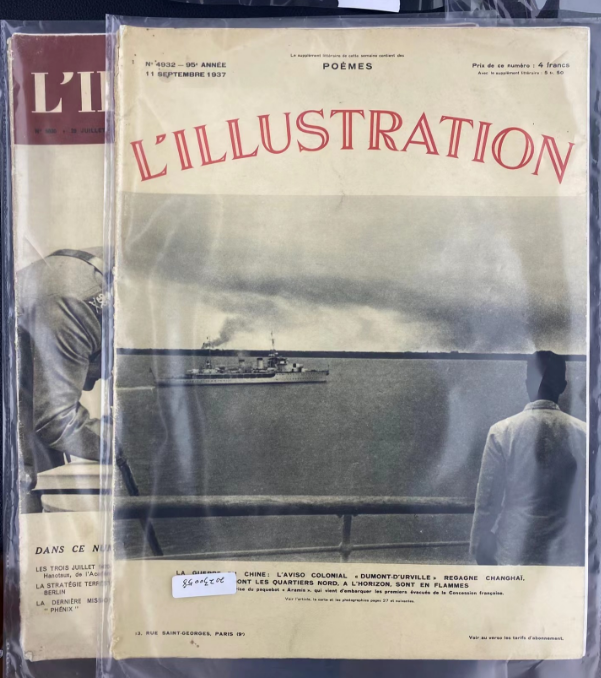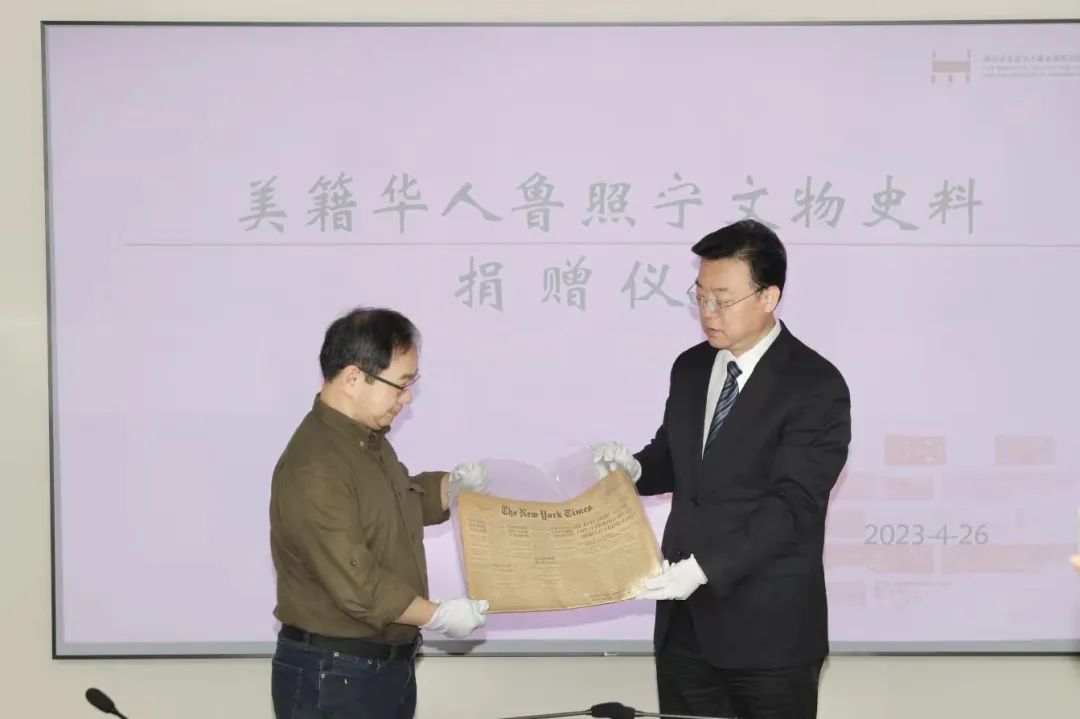Memorial Hall receives 98 items of overseas historical materials as new evidence related to the Nanjing Massacre
On the morning of April 26, a Chinese-American named Lu Zhaoning came to the Memorial Hall of the Nanjing Massacre Victims by Japanese Invaders and donated 98 items of overseas historical materials related to the Nanjing Massacre, including a soldier’s document and The New York Times newspapers.
A soldier’s document: evidence of the crime committed by the Japanese soldiers
A soldier’s document certifies the identity of a soldier. The holder of the document donated by Mr Lu is Masahisa Fukushima,leader of an infantry gun unit under the 45th Infantry Regiment affiliated with the Sixth Division of the invading Japanese troops. The booklet detailed his military experiences from January 10, 1937 when he was enlisted to January 9, 1941. During the period, he took part in the Japanese military’s operations in Baoding, Shijiazhuang, Shanghai, Nanjing, Guangde, Wuhu, Wuhan, and Yichang. After landing in Shanghai on November 19, 1937, he joined the battle invading Nanjing between November 19 and December 14, and then he was posted near Nanjing from December 15 to 21.
According to historical documents, the 45th Infantry Regiment was affiliated with the Japanese Army's Sixth Division headed by war criminal Hisao Tani. The division was one of the main Japanese troops that seized Nanjing and committed a slaughter there. A record about the regiment collected at the Memorial Hall said that the regiment joined the battle occupying Shuiximen in Nanjing after December 10, 1937, and also took part in the slaughter in the southern part of the city. Wang Weixing, a research fellow with the Institute of Historical Studies, Jiangsu Provincial Academy of Social Sciences, pointed out that the regiment was one of the troops that invaded Nanjing and took part in the Nanjing Massacre. The soldier’s document, as a proof of the Japanese troops’ atrocities in Nanjing, will prove an important historical material for research and display, Wang said.

Three foreign journalists: first exposed the truth behind the Nanjing Massacre
In December 1937 when the Japanese troops seized Nanjing, five brave Western reporters gave up the last chance to evacuate and chose to stay inside the city wall without hesitation as war correspondents. They were Archibald Trojan Steele of TheChicago Daily News, Frank Tillman Durdin of The New York Times, Arthur von Briesen Menken of The Paramount Newsreel, Charles Yates McDaniel of The Associated Press, and Leslie C. Smith of Reuters. When the massacre unfolded in front of them, they took risks to cover the tragedy and first broke the news to the outside world.
Among the donated historical documents was an English newspaper The China Presspublished in Shanghai on October 10, 1937. The newspaper carried pictures of foreign photographers who recorded how Japan boomed Nanjing. Standing on the city wall of Nanjing with their cameras, those photographers captured images of Japanese aircraft bombing Nanjing. As the caption indicated, Menken was among them. According to historical records, Menken managed to cable out a report on the United States Navy gunboat USS Oahu, with his dispatch first published in The Seattle Daily Times on December 16, 1937.

On the same page of the English newspaper The China Press, another picture showed Durdin and McDaniel. Durdin’s report appeared in The New York Times on December 18, 1937, “Wholesale looting, the violation of women, the murder of civilians, the eviction of Chinese from their homes, mass executions of war prisoners and the impressing of able-bodied men turned Nanking into a city of terror…”“The Japanese appear to want the horrors to remain as long as possible, to impress on the Chinese the terrible results of resisting Japan”. McDaniel described his observations in diary form which first appeared in The Seattle Daily Times on December 17, 1937: Dec. 14–Watched Japanese throughout city looting.Dec. 15…Dec. 16–My last remembrance of Nanking: Dead Chinese, dead Chinese, dead Chinese.”
Thanks to collection and research of historical materials related to the Nanjing Massacre over these years, Wang pointed out, these journalists, especially their righteous acts in Nanjing, are increasingly becoming known to the world. The latest discovery of their photos will add to image data about their action in Nanjing, Wang added.
Seven-disc set: Historical memory spreads globally
In 1997, Chinese-American writer and historianIris Chang published a book about the Nanjing Massacre, The Rape of Nanking: The Forgotten Holocaust of World War II. As soon as it came out, the book drew a strong response in the US and made The New York Times Best Sellers list for three months straight. Mr Lu donated a seven-disc set of the book released by American Audio & Video. Each disc including about 20 audio recordings, the set is an e-book designed for readers with reading disability, especially visually impaired people.
Mr Lu said the seven-disc set further demonstrated the widespread influence of Chang’s book in the global community, and helped spread the historical memories of the Nanjing Massacre to more people.
Yang Xiaming, a professor at the Party School of CPC Jiangsu Committee, once accompanied Ms Chang when she interviewed survivors of the Nanjing Massacre in Nanjing. The audio version of the book is very meaningful as it offers more visually impaired people access to the truth behind the Nanjing Massacre, Yang said.

Western newspapers: expose the atrocities perpetrated by the invading Japanese troops
Mr Lu also donated multiple English books, pictorials and newspapers. Of them, The New York Times newspaper published on January 25, 1938 provides particularly significant value. The front-page story was about the lasting chaos after the Japanese army occupied Nanjing. Foreigners, except diplomats, were still not allowed to enter Nanjing. Although Japan had promised to transfer the troops carrying out the slaughter out of Nanjing, crimes like raping women were still taking place, the report said.
Of Western newspapers, The New York Times produced the most reports about the atrocities perpetrated by the invading Japanese troops in Nanjing, Yang said. The New York Times placed Nanjing stories on the front page in the newspaper published on December 18, 1937, January 9, 1938, and January 25, 1938. Translations of The New York Times reports have been included in the Collection of Historical Materials about the Nanjing Massacre, but they were translated from PDF versions retrieved from the old newspaper database. The original January 25, 1938 newspaper donated by Mr Lu will become a crucial historical material and exhibit for the Memorial Hall.

Four Shanghai Evening Post and Mercury newspapers, published in Shanghai on October 16, 20, 23 and 26, 1937, respectively, reported the Battle of Shanghai. The newspapers carried pictures of destroyed houses and casualties after the Japanese troops invaded Shanghai, as well as the fierce battle between the two sides.
Two copies of a French newspaper, published on September 11, 1937 and July 29, 1939, respectively, showed photos of Japanese aircraft bombing the Nanjing Road in Shanghai and Chinese police searching for bodies in the debris.

“The tragic event has become history, but we Chinese people must never forget it,” Mr Lu said at the donation ceremony. “I was born in Nanjing. My roots are in Nanjing. I have the responsibility to contribute to my country and my hometown. For the historical memory that we must never forget, I will continue to collect and donate historical materials. There is no end to my donation.”
“The Nanjing Massacre is one of the most tragic histories for human. In order to protect the historical memory together, our international friends and Chinese people both in China and abroad have spent years in collecting historical materials. Mr Lu, in particular,has always taken this as his responsibility even though he lives overseas. Mr Lu has been collecting historical materials for the Memorial Hall since 2004. This is his 16th donation to the Memorial Hall. So far he has donated more than 2,300items to the Memorial Hall. We would like to thank Mr Wu for his donation. The Memorial Hall will preserve and fully utilize the collection as evidence of the history to safeguard peace,” said Zhoufeng, deputy director of the Publicity Department of the Communist Party of China Nanjing Municipal Committee and director of the Memorial Hall.

Lu Zhaoning donates historical materials related to the Nanjing Massacre to the Memorial Hall

